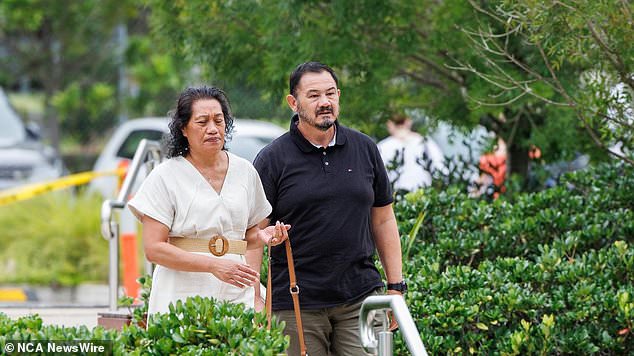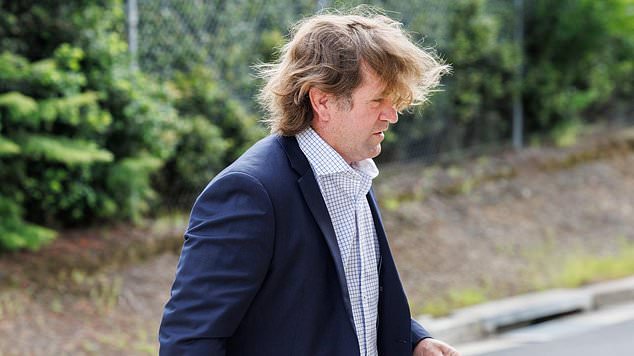Former Manly coach Des Hasler says no “red flags” were raised about Keith Titmuss’ conditioning or temperature on the day the rising rugby league star died after a pre-season training session.
The promising young striker lost consciousness at the team’s headquarters in Narrabeen, on Sydney’s northern beaches, before dying after suffering cardiac arrest.
A coroner’s inquest, which is examining his death, heard several experts conclude that Titmuss, 20, was suffering from heatstroke when he suffered a seizure after the club’s first NRL pre-season session on November 23, 2020.
The inquest, before deputy state coroner Derek Lee, is looking into the circumstances of the session, and the court heard that a year earlier the club had been urged to take heat readings before each outdoor session or risk “litigation “.
Titmuss participated in a 90-minute outdoor field session before moving inside the club’s ‘dojo’ for a short 10-minute cardio session, doing exercises including burpees and fireman’s carries.
Hasler, now coach of the Gold Coast Titans, told the court on Friday that he entered the dojo while the players were stretching and was present when Titmuss suffered cramps and then a seizure.
Des Hasler was a coach at the time and said there were no obvious red flags to suggest the young player was in danger until it was too late.
The court was told Titmuss returned to pre-season training weighing 116.8kg, four kilos heavier than when he was weighed in September at the end of the previous season.
Titmuss also had the lowest score of any of his teammates in a yo-yo test, a running exercise used to test a player’s aerobic capacity.
Asked if there were any red flags about Mr Titmuss’ conditioning after the yo-yo test, Mr Hasler said: “No, other than he was one of the lowest and it’s an area we could improve.”
He also commented that Mr Titmuss was in “great shape” despite having gained four kilos in the off-season.
When asked to rate how strenuous the training session was, Hasler described it as “six to seven” out of 10.
At the time, Titmuss was considered a rising star and had been tipped as a player of the future having been elevated to the club’s top 30 team.
Hasler told the court Friday that it was common for players to gain two to four kilos in the off-season.

Titmuss was set to make his NRL debut and was a rising star in the NRL club.
Counsel assisting Adam Casselden SC pressed him on whether the training session was too “demanding” given Mr Titmuss’ score on the yo-yo test.
“It would have been a challenge… But there were planned stops so we had a chance to recover and rehydrate before moving on to the next phase,” Mr Hasler said.
Casselden questioned whether the session posed an “unnecessary risk” to Titmuss given his level of conditioning at the time.
But Hasler said there were breaks during the session and the players were allowed to rest and recover.
He described it as a “longer, slower” session that registered at lower meters per minute in the players’ GPS data.
The court has been told young NRL players sometimes felt pressured to push themselves during training for fear of falling out of favor with their coaching staff.
However, Hasler said he tried to foster an open relationship in which the players felt comfortable.
“If you feel sick or feel like you’re not coping well, if you feel like you’re struggling or injured, (the club encourages you) to raise your hand and let us know,” Hasler said.
The court was told there were 10 members of staff including Mr Hasler, his two assistant coaches, two physiotherapists and other high performance staff monitoring the 15-player session for any signs of distress.

Hasler said there were breaks during the session and the players were allowed to rest and recover.

The Titmuss family seeks answers about how this tragedy could have occurred
The court was told that in 2019, the club’s then medical director Luke Inman sent an email to Mr Hasler, Manly performance boss Don Singe and general director of football John Bonasera.
In the email he implored the club to take a kestrel measurement (a portable reading of heat and temperature) before each training session.
In the email, Dr. Inman warned that the club would “open itself to litigation” if a player suffered heatstroke or “died worse.”
The investigation was previously told that a high temperature of 24.9C was recorded in Terrey Hills on the day of the incident.
When asked if he remembered receiving that email, Hasler said “no.”
Hasler said he did not remember taking kestrel measurements before outdoor training sessions.
Asked if there were any concerns about the temperature, which ranged between 20°C and 24°C that day, Hasler said: “No.”
“Keith was a beautiful boy, he was very loved, very liked and respected,” Hasler said as Titmuss’ family sat in the back of the courtroom.
“I am very sorry and I share your anguish, I really am.”


